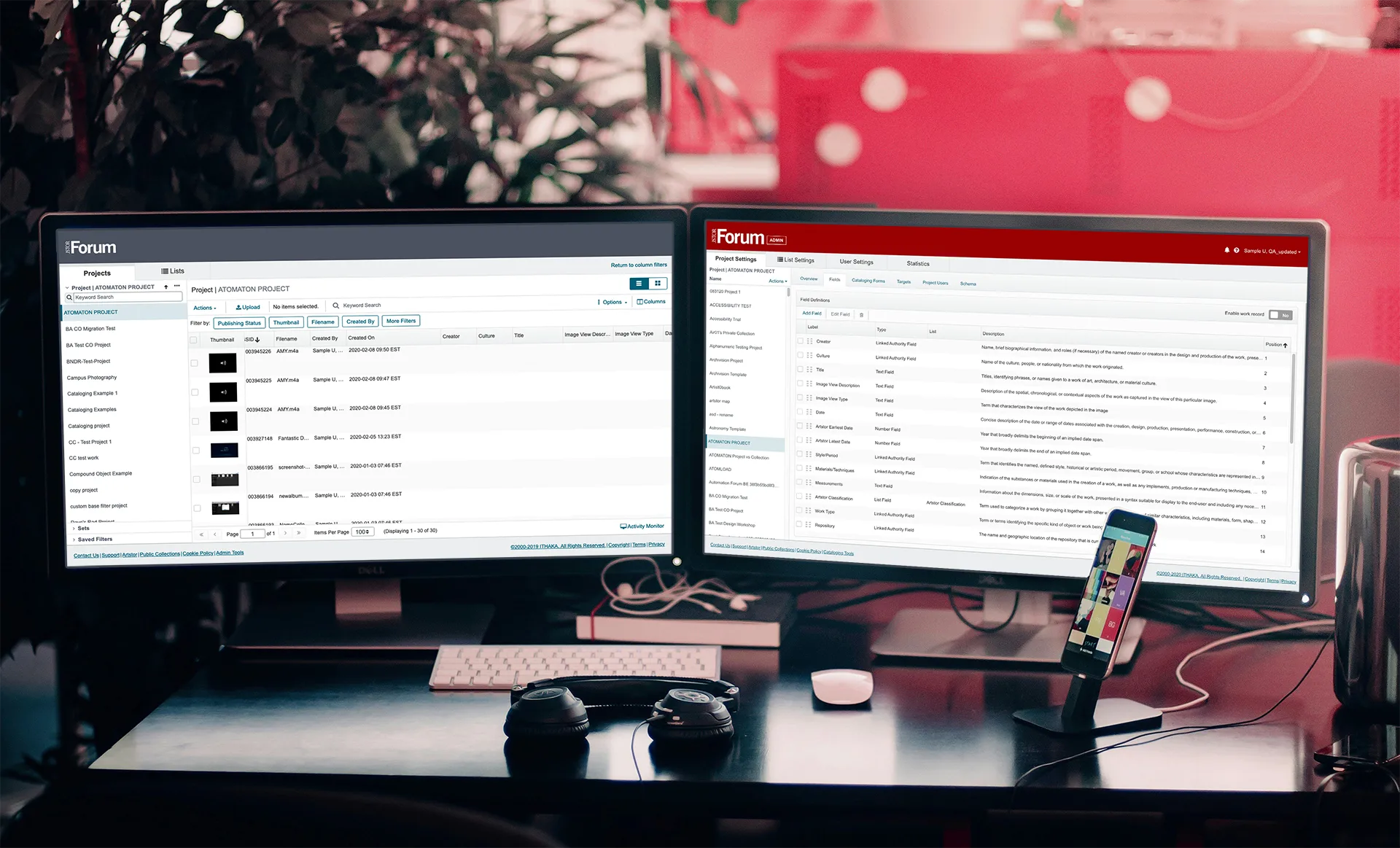
JSTOR Forum is a digital collection cataloging and publishing tool designed for universities, archives, and museums. This tool enables institutions to share their digital collections across various platforms, including JSTOR, The Digital Public Library of American, and custom OMEKA sites. Here are a few examples of collections published on JSTOR, a digital library, using JSTOR Forum.
JSTOR Forum was originally fragmented into separate applications for catalogers and administrators to meet the needs of a specific institution with distinct roles. However, as more institutions have subscribed to the application, this role-based separation has become less relevant, creating significant operational challenges.
This siloed approach resulted in disjointed codebases, restrictive user roles, and a fragmented user experience that impeded performance improvements, publishing capabilities, and future innovation.
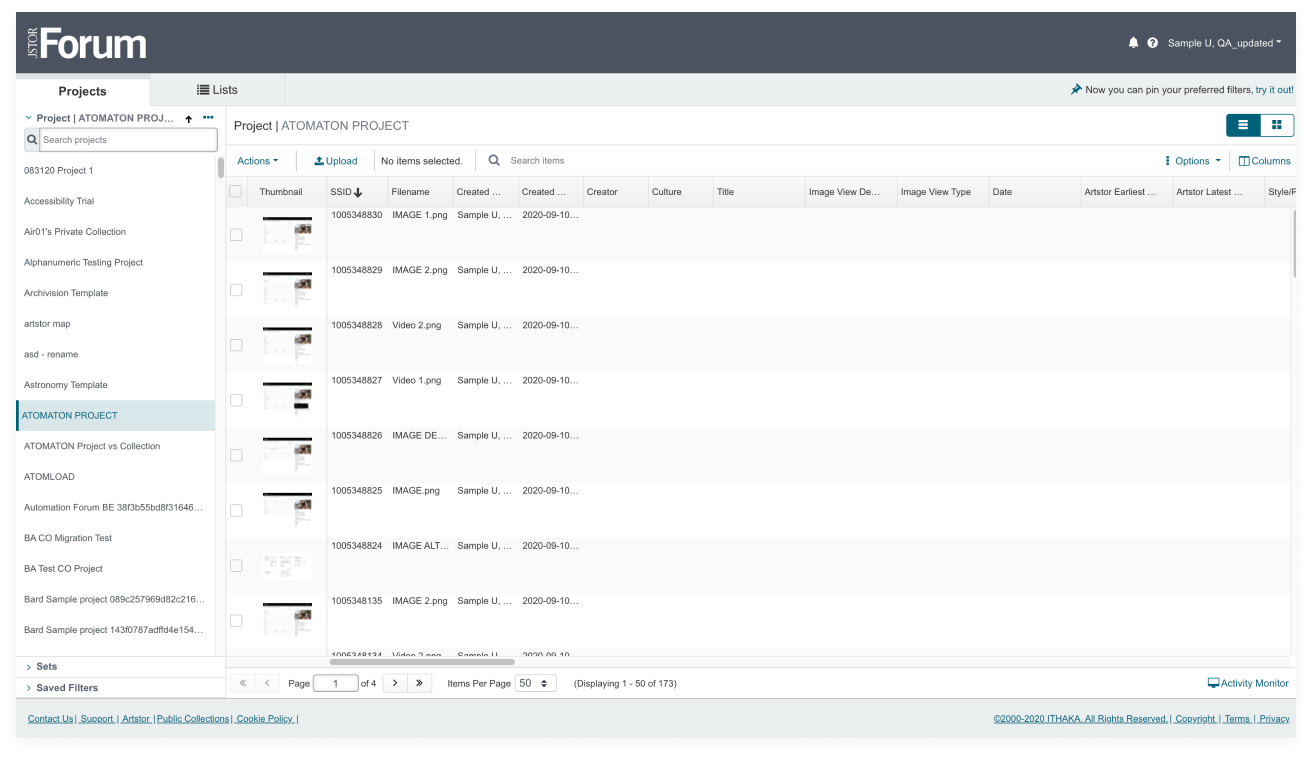 Open
Open
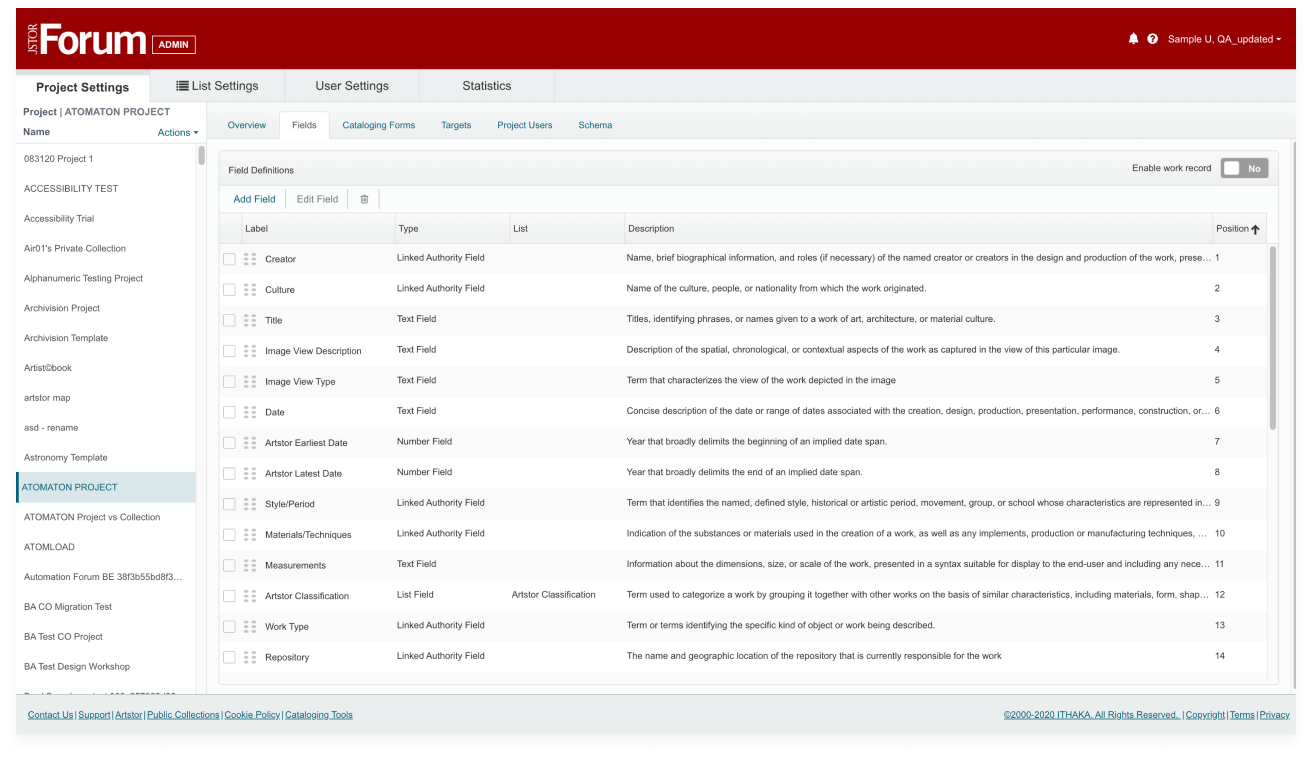 Open
OpenMerge the Cataloging and Publishing tools, unifying the codebase, enhancing user workflows, and creating a more flexible, coherent platform that can scale
The simplest and fastest way of bringing the current admin features into the cataloging tools while maintaining some principles of user experience and design.
This concept would be an easy transition for current users of the system and quick for the engineers to migrate.
The administrative tasks are still separated from cataloging tasks in arbitrary and idiosyncratic ways as they were before.
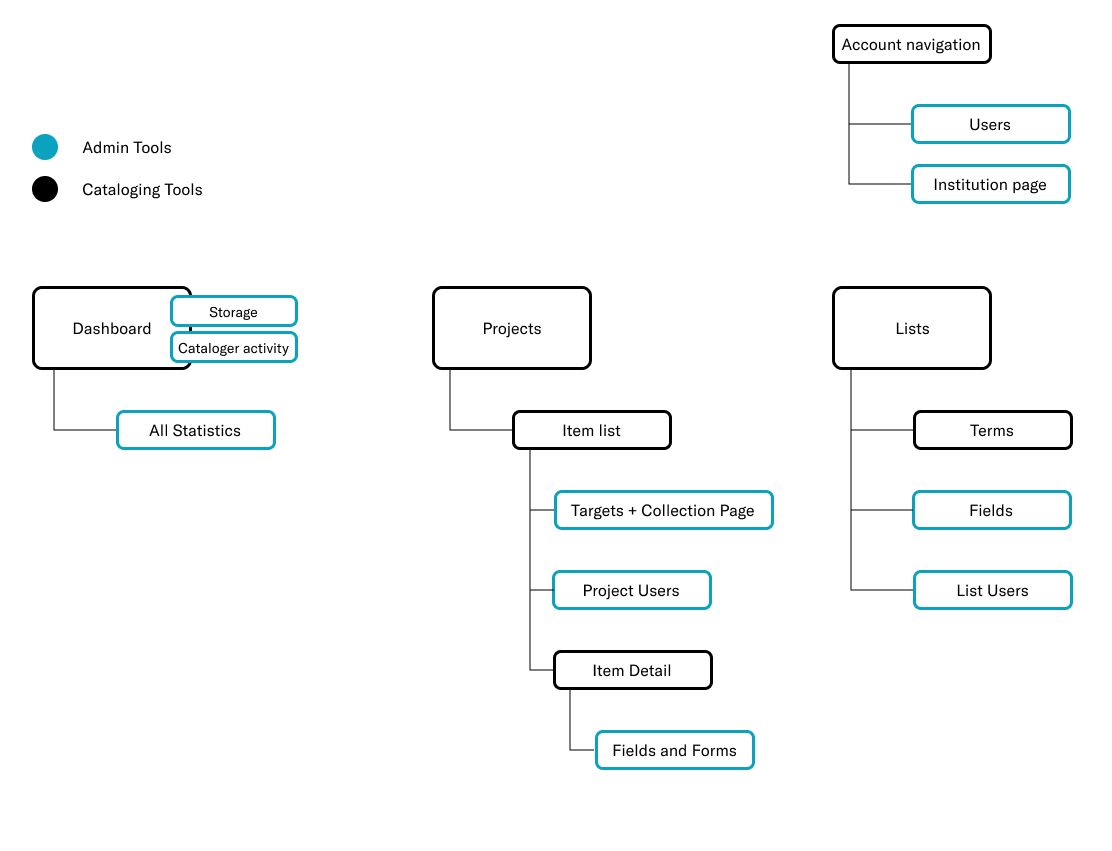 Open concept 2 structure in a new tab
Open concept 2 structure in a new tab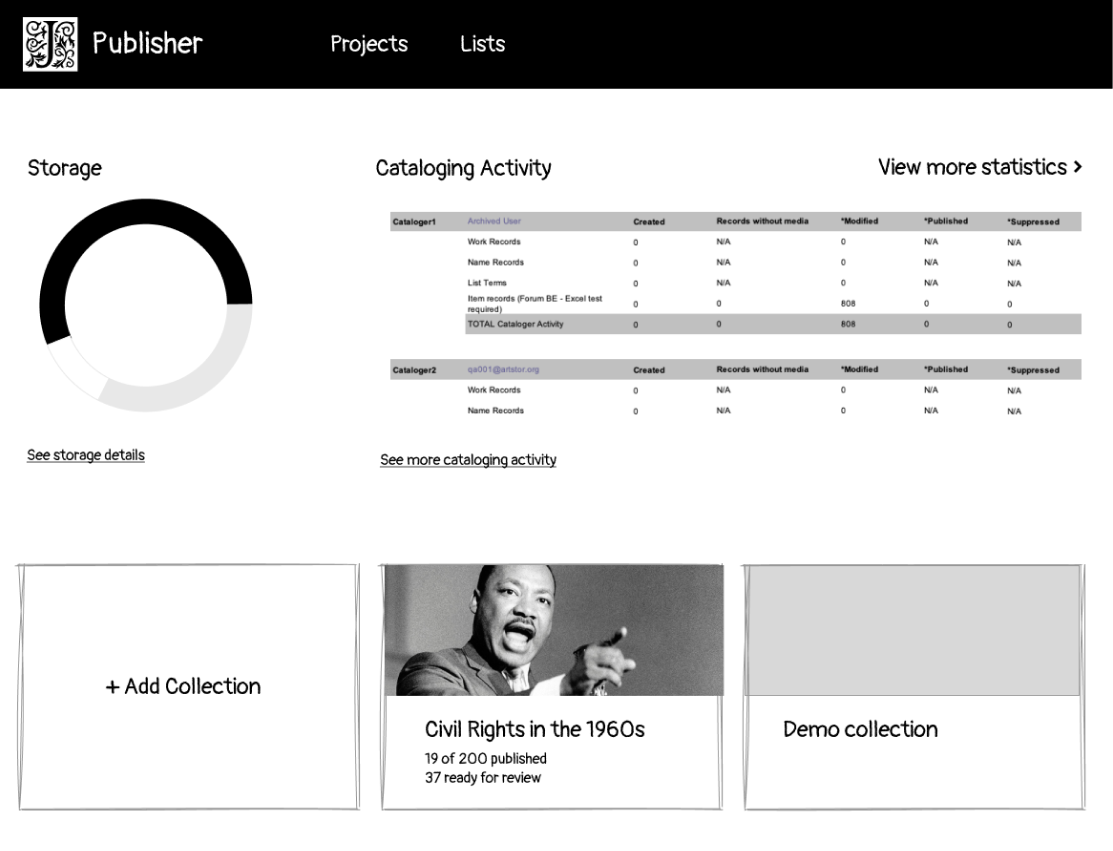 Open concept 2 in a new tab
Open concept 2 in a new tabThe admin functionality is broken down into a set of individual features, prioritized and streamlined, then selectively placed into the various workflows of the combined application in a deliberate and intuitive way. This concept would be learnable by both current and new contributors. This is what we ultimately built and launched.
It is a more complex and time-consuming effort to build and launch. Institutions would need to update their workflows and training.
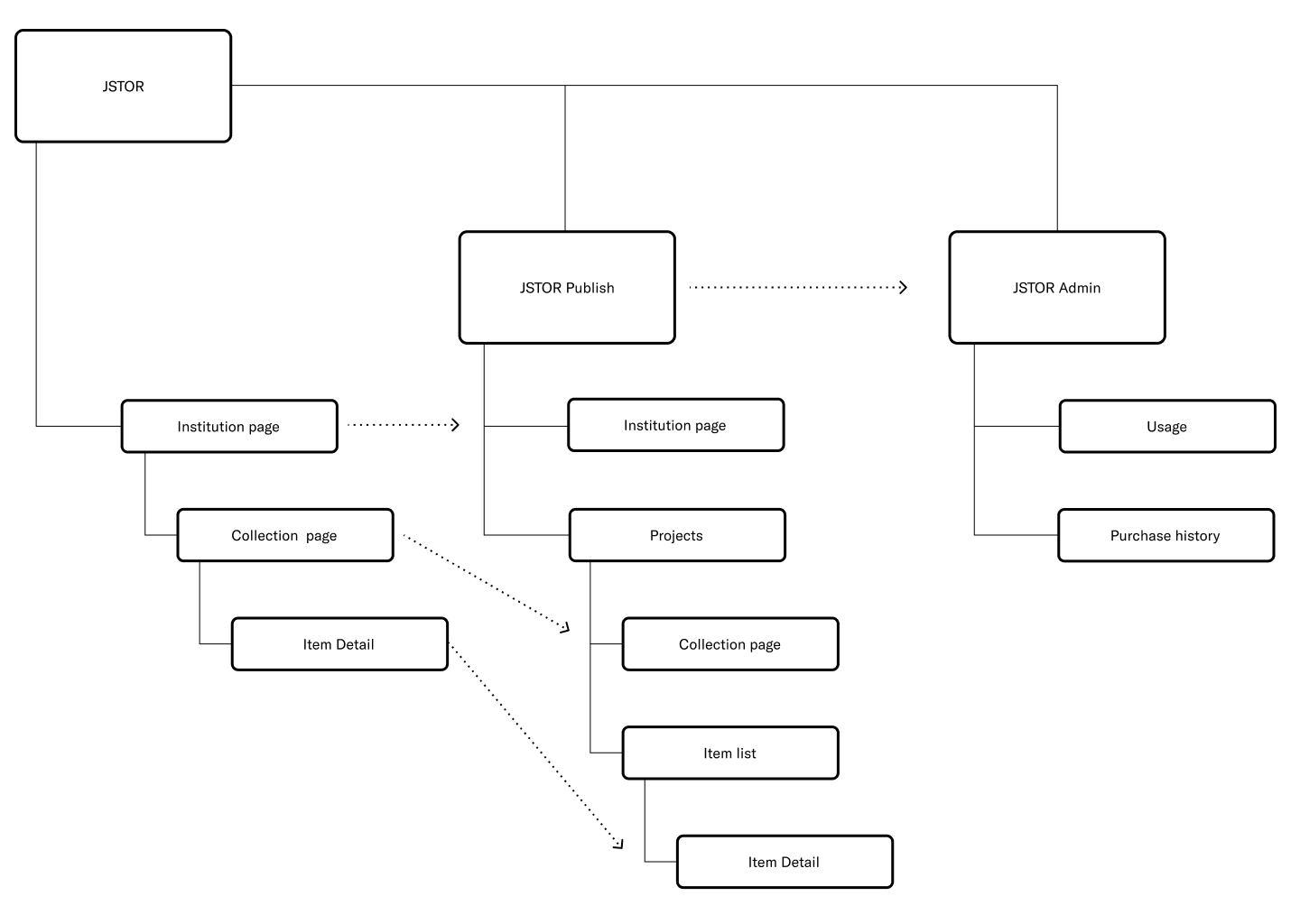 Open concept 3 structure in a new tab
Open concept 3 structure in a new tab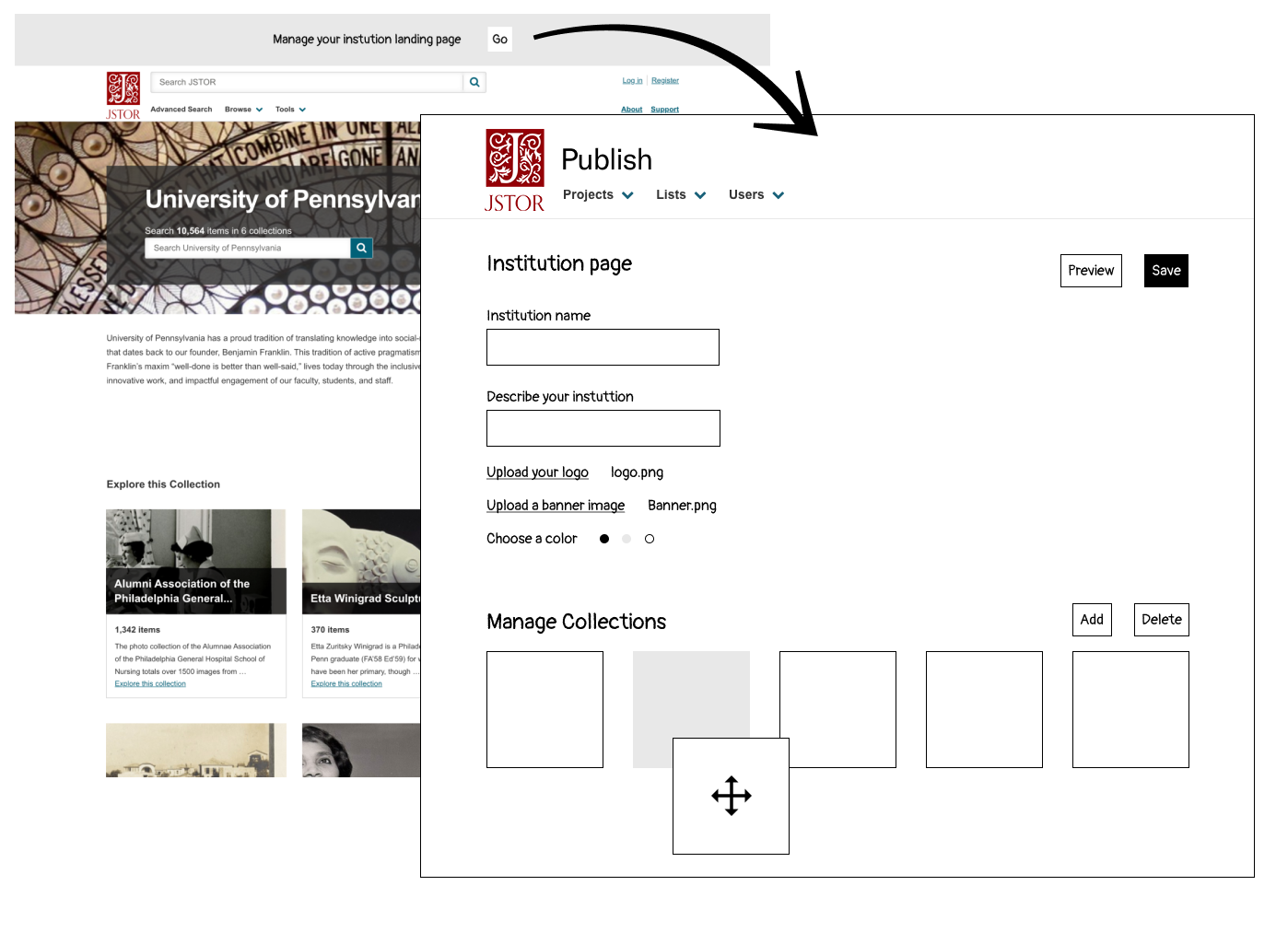 Open concept 3 in a new tab
Open concept 3 in a new tabLooking toward the future, this concept shifted away from a catalog-centric experience into a publishing and content-management product.
There is not a separate publishing tool, with publishing features integrated into the digital library platform, similar to a CMS.
While this aligned with the future direction of the organization, this concept presented a profound impact on many teams and the JSTOR platform.
Starting small with entry points from the platform to the publishing tool could be considered in the near term. Ultimately, ideas from this concept inspired new product called Collection Loader.
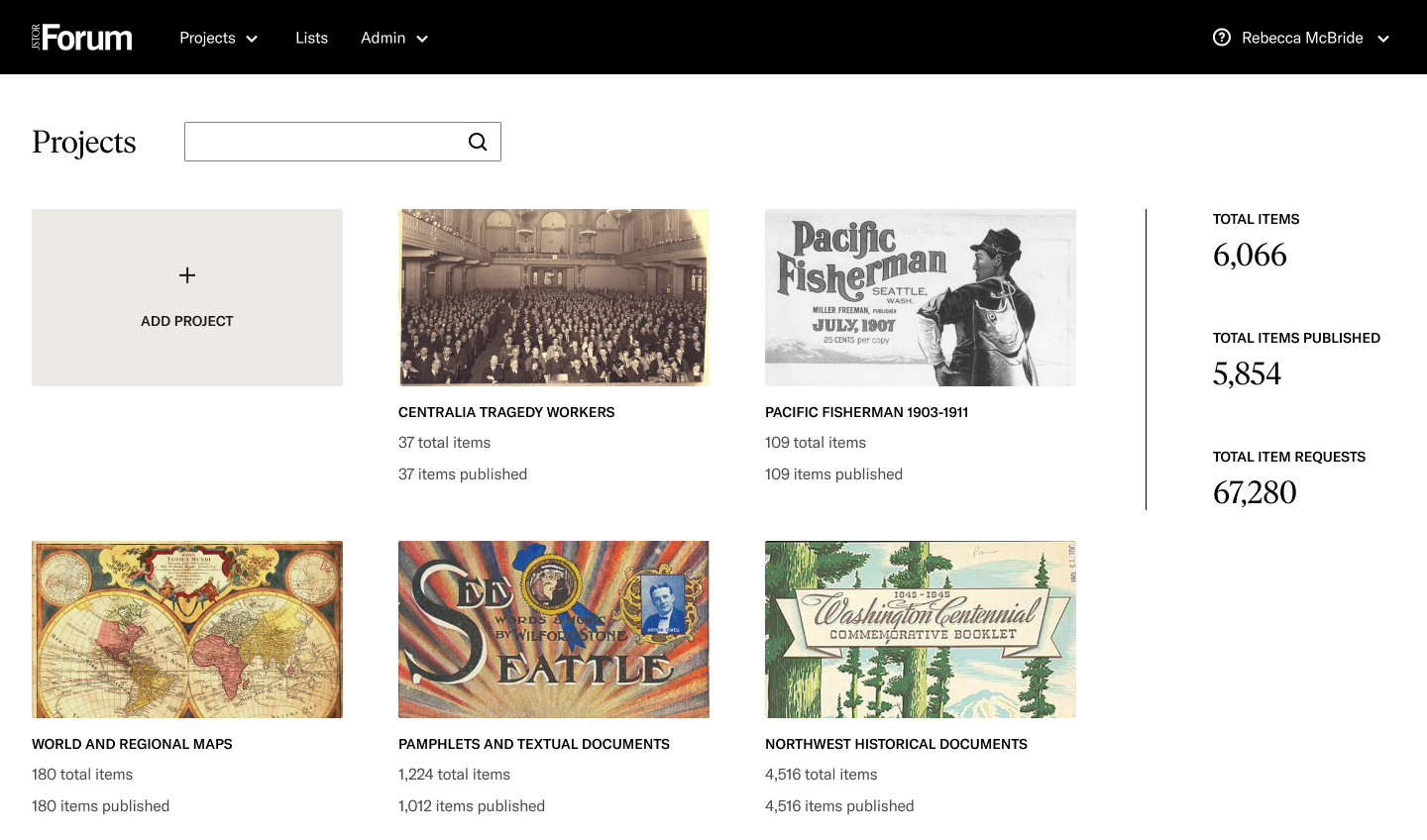 Open home dashboard in a new tab
Open home dashboard in a new tabI designed a dashboard that gives users a clear overview of their projects and key collection statistics, informed by user testing feedback. Previously, users were taken directly to the last project they edited after logging in, which felt disorienting and lacked a true sense of 'home'.
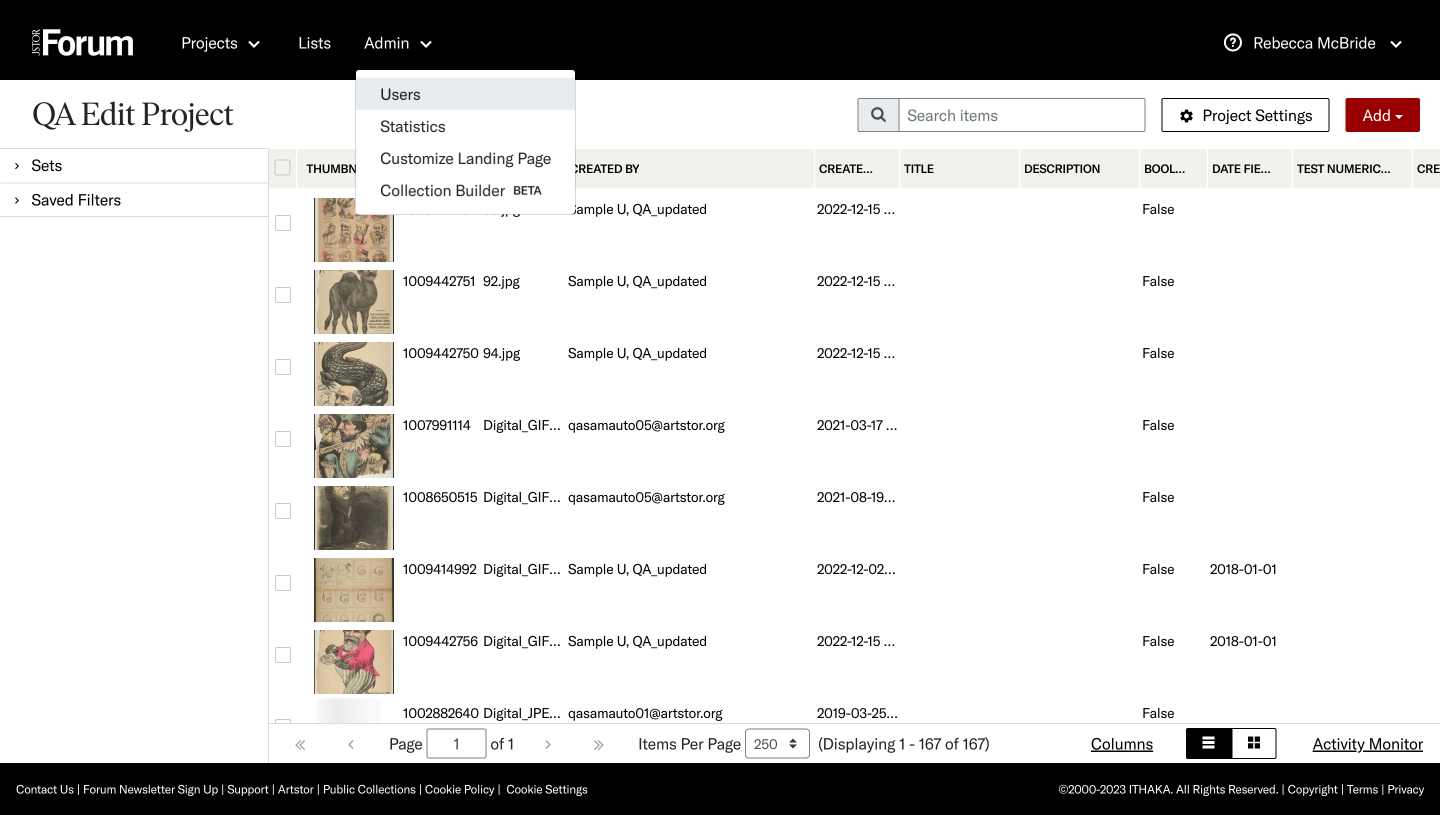 Open in a new tab
Open in a new tabI redesigned the global navigation system to better support scalability for new features, including role-based admin tools and early access to beta features. Project settings were integrated directly within each project, conveniently placed at the top of the item list to resolve the previously disjointed experience.
Emily from RISD, “I like the new joining of the Admin with the Cataloger environment. I would find myself having to login separately when I was trying to set up projects for students. It’s now just much, much easier.”